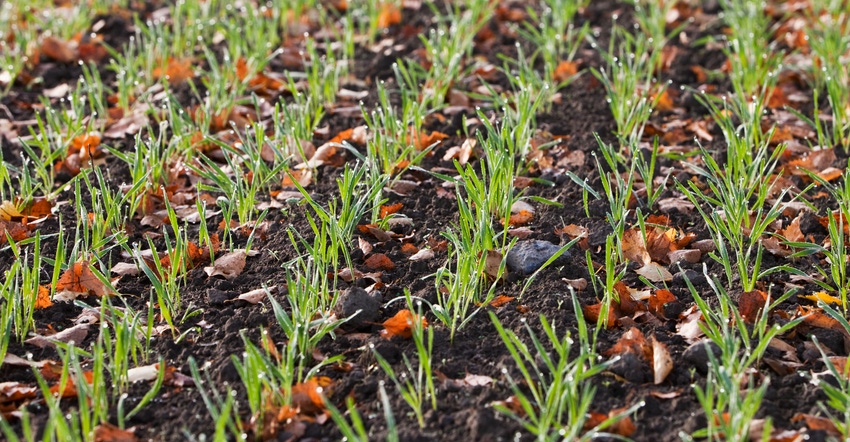October 12, 2020

A lot of farms are short on forage due to the dry conditions, especially in parts of New York and New England. The earliest emergency forage for next spring you can plant is a winter grain.
We have been suggesting winter triticale for several years due to its high quality, standability and yield from the improved varieties on the market compared to rye or winter wheat. Our management studies the past 10 years confirm that for higher yields from a greater number of tillers, planting early is strongly suggested.
But is it too late?
Now that it’s October, should I give up on winter forage, especially winter triticale? No. Our suggestions for planting early for high yield are being misinterpreted as being able to only plant triticale early or not at all. This is incorrect.
We plant corn about the beginning of May for optimum yield here in the Albany, N.Y., area. We also plant on May 15, June 1 and, in some bad years, from June 15-20. Yes, yield goes down when we plant corn later, but you do get a crop.
Winter triticale is no different. Planting later will still get you some yield, just somewhat less compared to planting a month earlier. Our plantings in our variety trial were put in Sept. 11 and ran from 3.5 to 4.25 tons of dry matter (10 to 12 tons) of silage per acre. What if we missed that early date as many will this year?
In the graph below, a 2006 seeding rate study, we planted somewhat late — Sept. 27 for our “early” date. Note: the Sept. 27 date is actually three weeks late for our climatic region.

We also planted on Oct. 19, six weeks later than normal, sort of like planting corn in mid-June.
Each seeding rate was four replications. The average silage yield was 6.27 tons of 35% DM (dry matter) silage — 2.19 tons DM — for the September date. The October date was 33% less and averaged 4.17 tons of 35% DM silage — 1.46 tons DM.
In 2015 we repeated the study, planting by Oct. 17. Again, there was no response to seeding rate over 100 pounds an acre, but because of a warm winter, the mean yield was 3 tons dry matter an acre, or over 8.5 tons of silage an acre in the spring.
What farmer would not want to pull off over 4 tons silage an acre (equal in yield to the first cut of a good alfalfa stand) of some of the highest-quality forage you can produce, and do it in mid-May when nothing else is ready to harvest?
Planting later will mean the crop comes off a little later. It matures about two days later for each week later you plant in the fall, although newer triticale varieties mature almost as early as winter rye.
Save money on seed
If you are planting late do not increase the seeding rate. My replicated research found that there is no significant yield increase with increased seeding rate.
What does work is to use a three-way seed treatment. For the later planting date, the treated seed yielded 28% more than the control of untreated seed. The Oct. 5 planting with seed treatment still gave us 2.8 tons DM (8 tons an acre at 35% DM) yield, which is a very profitable crop.
Planting depth becomes more critical when you’re planting later, as you have smaller root systems to keep the plant from heaving out and dying in the spring. Each year people ignore the 1.25-inch deep minimum planting depth suggestion and lose the crop over winter.
One other thing: At this late date for Albany, N.Y., and further north, preliminary research shows no response to fall nitrogen. That might be different further south.
Kilcer is a certified crop adviser in Kinderhook, N.Y.
About the Author(s)
You May Also Like




